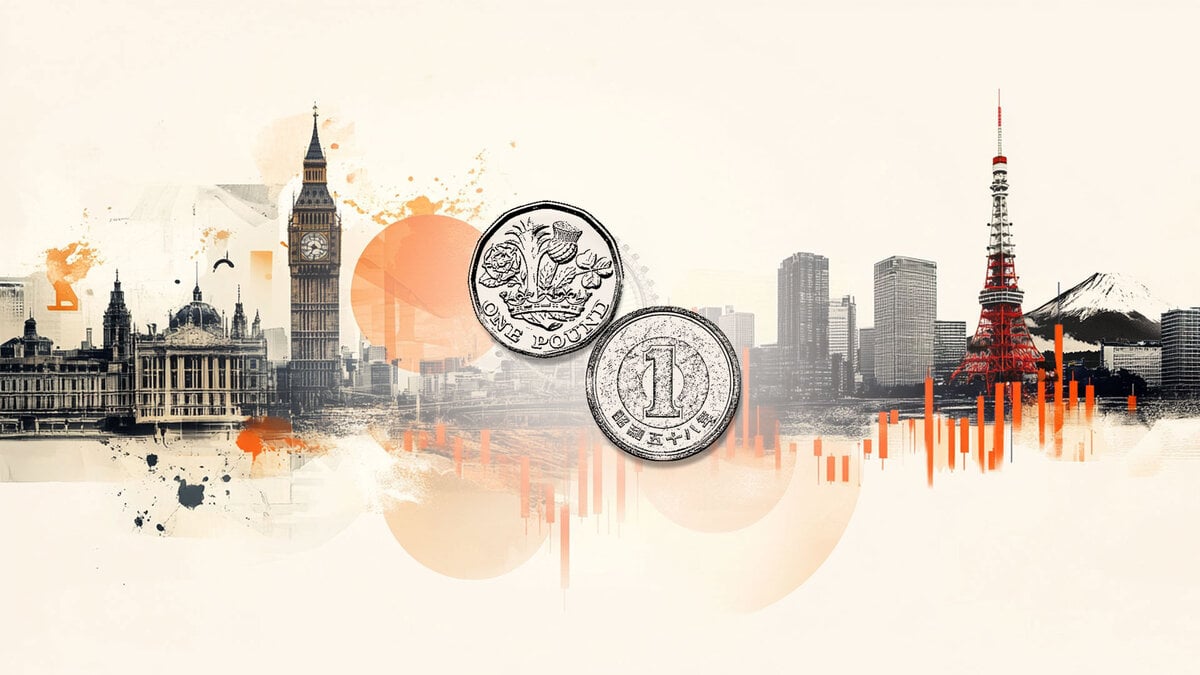GBP/JPY slides on softer UK labour market conditions, hawkish BoJ comments
- GBP/JPY falls after weak UK employment figures pressure the Pound Sterling.
- The Pound suffers from expectations that the Bank of England (BoE) may be forced to cut rates after the disappointing jobs data.
- The UK unemployment rate rises to 4.6%, accompanied by an increase in jobless claims.

The Japanese Yen (JPY) is strengthening against the British Pound (GBP) on Tuesday, following the release of employment data that suggests the UK economy may be under pressure.
After retesting the 196.00 psychological level prior to the release of the UK employment data, GBP/JPY is erasing its recent gains. At the time of writing, the pair is trading near 195.29, a level that aligns with the 78.6% Fibonacci Retracement level of the January-April decline.
UK employment data reveals labour market weakness
The United Kingdom’s (UK) Office for National Statistics (ONS) released a labor market report on Tuesday that indicated a softening in labor conditions. The ILO unemployment rate increased to 4.6% in the three months leading up to April, up from 4.5% reported in the first quarter.
While this figure aligned with expectations, it suggests that the labor market is losing some momentum.
The Claimant Count Change showed that the number of people claiming jobless benefits increased by 33,100 in May. The data reversed the previous month's revised decline of 21,200 and missed forecasts for a smaller rise of 9,500.
Meanwhile, the employment change figure showed a gain of 89,000 jobs in the three months to April, a slowdown from March’s increase of 112,000, further suggesting that job growth is cooling as economic activity moderates.
The Employment data signaled a gradual softening in the UK labour market, which could influence the Bank of England’s (BoE) outlook on interest rates. Signs of a softer labor market could add pressure to BoE officials to cut rates.
For the GBP/JPY pair, expectations that the BoE may reduce interest rates while the BoJ looks to increase rates could drive prices lower in the near term.
On Tuesday, BoJ Governor Kazuo Ueda said that Japan’s inflation still has some way to go to reach the 2% target. “We will raise interest rates if we have enough confidence that underlying inflation nears 2% or moves around 2%,” Ueda said.
Market participants interpreted these remarks as reducing the likelihood of an imminent interest-rate hike.
Central banks FAQs
Central Banks have a key mandate which is making sure that there is price stability in a country or region. Economies are constantly facing inflation or deflation when prices for certain goods and services are fluctuating. Constant rising prices for the same goods means inflation, constant lowered prices for the same goods means deflation. It is the task of the central bank to keep the demand in line by tweaking its policy rate. For the biggest central banks like the US Federal Reserve (Fed), the European Central Bank (ECB) or the Bank of England (BoE), the mandate is to keep inflation close to 2%.
A central bank has one important tool at its disposal to get inflation higher or lower, and that is by tweaking its benchmark policy rate, commonly known as interest rate. On pre-communicated moments, the central bank will issue a statement with its policy rate and provide additional reasoning on why it is either remaining or changing (cutting or hiking) it. Local banks will adjust their savings and lending rates accordingly, which in turn will make it either harder or easier for people to earn on their savings or for companies to take out loans and make investments in their businesses. When the central bank hikes interest rates substantially, this is called monetary tightening. When it is cutting its benchmark rate, it is called monetary easing.
A central bank is often politically independent. Members of the central bank policy board are passing through a series of panels and hearings before being appointed to a policy board seat. Each member in that board often has a certain conviction on how the central bank should control inflation and the subsequent monetary policy. Members that want a very loose monetary policy, with low rates and cheap lending, to boost the economy substantially while being content to see inflation slightly above 2%, are called ‘doves’. Members that rather want to see higher rates to reward savings and want to keep a lit on inflation at all time are called ‘hawks’ and will not rest until inflation is at or just below 2%.
Normally, there is a chairman or president who leads each meeting, needs to create a consensus between the hawks or doves and has his or her final say when it would come down to a vote split to avoid a 50-50 tie on whether the current policy should be adjusted. The chairman will deliver speeches which often can be followed live, where the current monetary stance and outlook is being communicated. A central bank will try to push forward its monetary policy without triggering violent swings in rates, equities, or its currency. All members of the central bank will channel their stance toward the markets in advance of a policy meeting event. A few days before a policy meeting takes place until the new policy has been communicated, members are forbidden to talk publicly. This is called the blackout period.
Author

Tammy Da Costa, CFTe®
FXStreet
Tammy is an economist and market analyst with a deep passion for financial markets, particularly commodities and geopolitics.

















